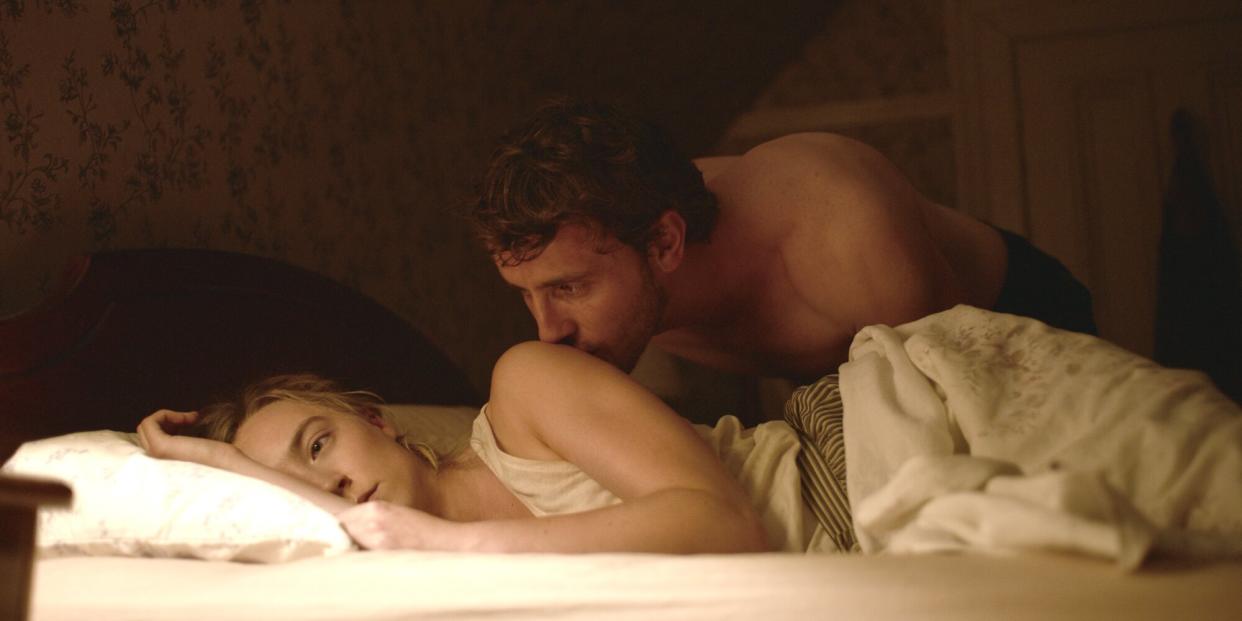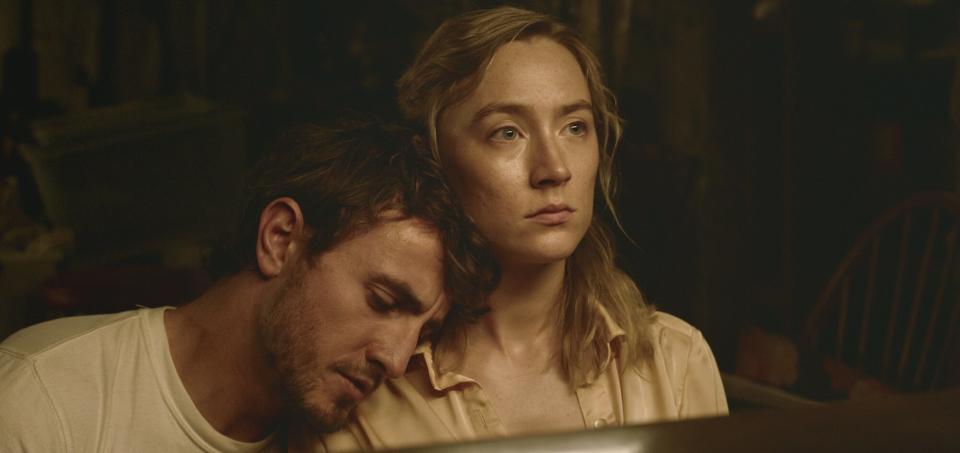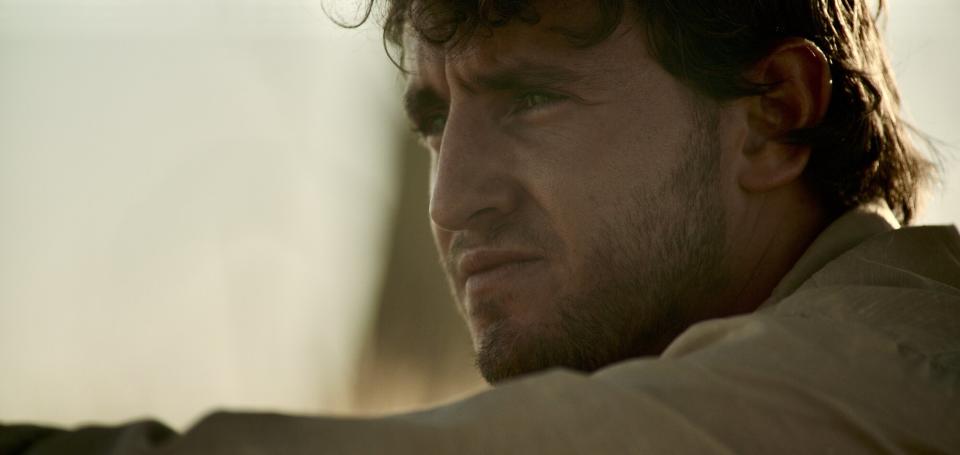“Foe” director breaks down the film's sci-fi twist, Paul Mescal's powerful performance

- Oops!Something went wrong.Please try again later.
Artificial intelligence has long been a subject of interest for science-fiction, but this year the lines have blurred between what's real and what's fantasy. Thanks to ChatGPT and Bing's new image generator, the internet is proliferating with text and photos that may or may not have been made by humans. Thanks to A.I., "Am I looking at something real?" is an increasingly common question faced by internet users.
That same line-blurring is the heart of director Garth Davis' new sci-fi film Foe. Based on Ian Reid's novel of the same name, Foe stars Paul Mescal and Saoirse Ronan as a rural couple in a near-future America. As climate change ravages the planet, a new government program wants to test both the viability of humans to survive in space, and the possibility of replacing space-bound humans with A.I. lookalikes. Mescal's Junior is selected by the mysterious Terrance (Aaron Pierre) to test both these hypotheses, starting a process that ripples through his marriage. An exclusive clip from the film (shown in the video above) presents Terrance's arrival.
"What drew me to the book was the central relationship. That's the beating heart of the story," Davis tells EW. "But there are also these wonderful metaphors in the novel, how the decaying marriage reflects the decaying planet. I'm also fascinated by identity and how do you know what is real? That's not unique to artificial intelligence. In a longterm relationship, do we lose our identity? Do we get replaced by our partner's identity?"

Amazon Studios Saoirse Ronan and Paul Mescal in 'Foe'
At first, Foe might seem like a paradoxical movie. Its head is in the clouds, with space stations and robots, but the screen is fixed on recognizable rural life. Ronan's Henrietta fetches water from a well and takes orders as a waitress at a roadside diner, while Junior works in a chicken factory.
"A.I. is fascinating because it opens up parts of your brain that don't usually get open and makes you reflect on your own humanity and sentience," Davis says. "There's sentience in trees, there's sentience in everything, and we have a responsibility to all of it. The chicken factory is interesting because they have sentience too, but we just see them on a factory line. So, when that A.I. becomes human, how are we gonna react to it? Are we gonna treat it like the chickens?"
In this movie, at least, they do. The key scene of Foe comes near the end, when the movie's sci-fi twist is revealed. We learn that, up to this point, we have not actually been watching the real Junior, but his A.I. substitute who has been led to believe he was real. Terrance shows up again, along with a lot of faceless government figures, to put this artificial Junior out to pasture.
It's a brutal scene, clothed in an alarming pink light as the fake Junior (but as far as viewers are concerned, the only Junior we've ever known) is stripped down, covered in a strange liquid, and "turned off" in the worst way imaginable.

Amazon Studios Paul Mescal and Saoirse Ronan in 'Foe.'
"I wanted it to feel as alarming as the chicken factory," Davis says of A.I. Junior's death scene. "They strip him down and kill him like an animal because he's not human. The brutal truth of that, that because he's not human they think they can treat him however they want to, was very powerful to me. From a directorial point of view, I really loved the idea that whenever the outside world shows its face, it had a distinct difference. So, the green light birthed him at the beginning of the film and then the pink light was his death."
As you might imagine, Davis talked a lot with Mescal about how to play the two versions of Junior. As the A.I. Junior is so brutally decommissioned, we meet the "real" Junior as he watches his robot self be destroyed. Afterward, we learn that this Junior is older, more isolated, and emotionally closed off from his wife. He even seems to resent the time Henrietta spent with the A.I., which was based on his younger personality.

Amazon Studios Paul Mescal in 'Foe.'
"She didn't have an affair with a stranger, she had an affair with the version of her husband that she first met," Davis says. "That's an intriguing idea, because he's not having to play a different character, he's just having to play an earlier version of a character. We spoke about physicality, like, how does someone's physicality shift when you become more emotionally closed and shutdown? That bubbles up in the performance. One of the things I really love about that scene is where you see the real Junior looking at a version of himself dying right there on the floor. It's almost like he's looking back at himself when he used to be free."
Throughout the movie, the filmmaker plays with the beetles that wander the couple's home, and whether android Junior or the real Junior would choose to crush them. It's a note repeated at the end of the movie when Henrietta leaves to explore the world, while an android that replaces her at the house sees a similar critter. With Mescal's performance as the older Junior observing his writhing android on the floor, Davis says, "You can tell that he knows that he's crushing that beetle and denying that part of himself. He's allowing it to happen. There's something very deep happening in those glances and in those performances that Paul and I really got into. It's a real rabbit hole."
Foe is playing now in theaters.
Want more movie news? Sign up for Entertainment Weekly's free newsletter to get the latest trailers, celebrity interviews, film reviews, and more.
Related content:

